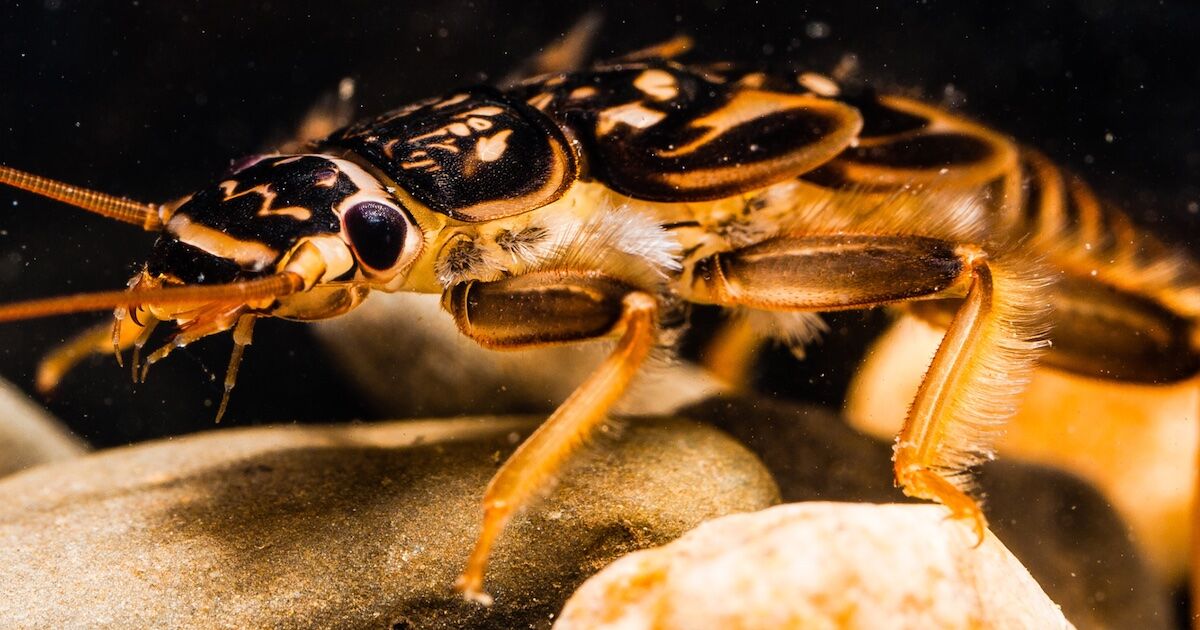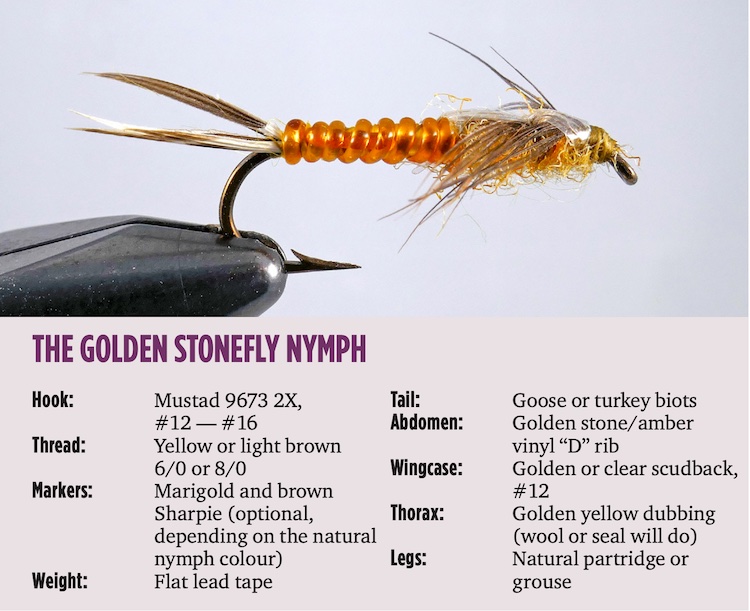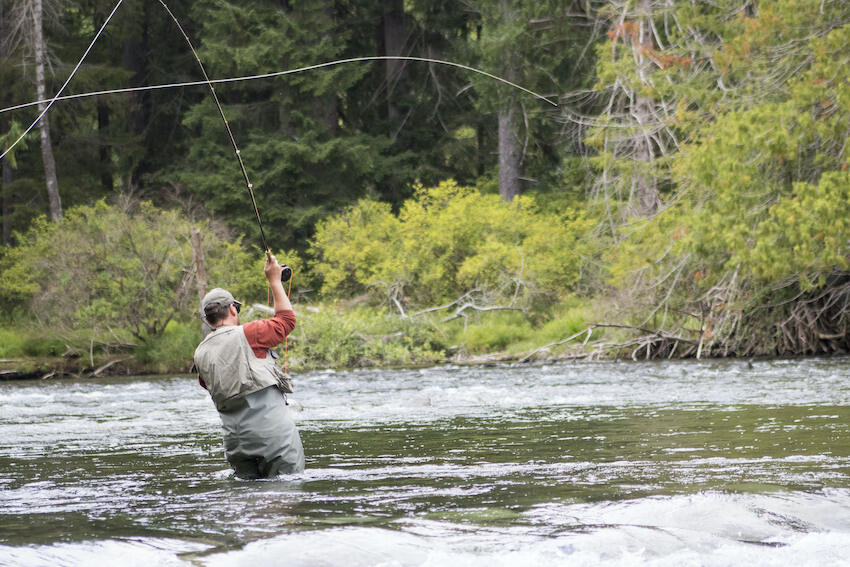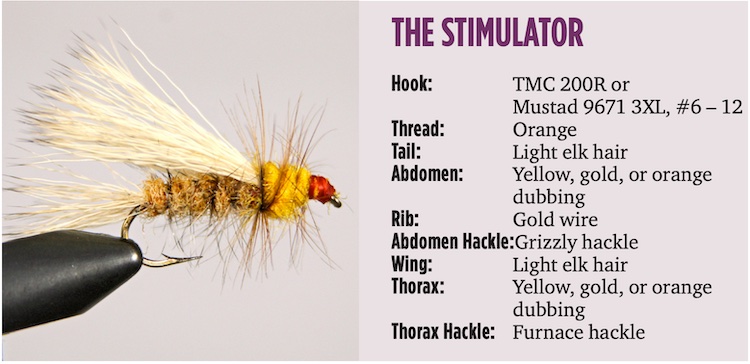
What Is A Stonefly?
Stoneflies are one of the four major aquatic insects on which freshwater fish feed. They are found only in fast-moving water such as the freestone streams and rivers of the northwestern United States and Canada. They are not found in lakes or slow spring creeks. Like mayflies, stoneflies undergo incomplete metamorphosis; there is no pupal stage.
In the spring, the stonefly eggs hatch on the river bottom. A tiny larva appears, one we commonly call a nymph. As the weeks pass, the nymphs grow until their bodies become too large for their outer shell. When this occurs the outer shell (exoskeleton) splits open and the new, larger nymph emerges with a new exoskeleton. These growth stages are called larval instars. The nymphs go through many instars before emerging as adults and, depending upon the species, can take a year or two to reach the stage where they are ready to metamorphose into the adult. This is a bonus for the fly-fisher, because stonefly nymphs are available to the trout year-round and thus are always recognized by the fish as food. Stonefly nymph flies work well in just about any free stone stream at any time.
While the nymphs are crawling around on the bottom of the river feeding and going through their instars, they are available to the trout as food, and trout feed on them regularly. They often wash off the rocks and tumble in the current along the bottom, and it is here that they offer the trout their easiest meal.
A good imitation of the stonefly nymph is described below. Vary the colour to match your local species. You can weight it with lead along the shank if you want it to sink faster.

The Golden Stonefly Nymph Tying Steps
-
- Wrap the thread back to rear of hook and tie in the quill tail as you would normally for stonefly pattern, about 1⁄2 the shank length, splitting the quills to form a fork.
- Tie in the “D” rib along the side of the hook shank with the curved face facing the shank. It will flip when you wrap it, and the flat face will be along the hook shank as you wrap forward. Leave enough material to wrap forward to reach the thorax area (about 2⁄3 of hook shank).
- Build up a tapered body with the thread.
- Using the markers, colour the top half of the abdomen. First, colour the whole top half of the abdomen with marigold. Then use the brown marker to create a mottled effect on the top half of the abdomen.
- Wrap the “D” rib forward and tie off about 2⁄3 of the way up the hook shank.
- Tie in the scud back on the top side of the shank.
- Dub onto the thread the dubbing material.
- Wrap the dubbing forward about halfway along the thorax length.
- Make a “V” out of a partridge feather. Lay it at the front edge of the dubbing you just wrapped on. Tie it in so that the fibres form “legs” to each side of the fly. They should sweep back just past the back of the dubbing.
- Pull the scud back over the dubbing and the partridge feather,and tie down to form one of the two wing cases; wrap the thread forward a bit extra.
- Pull the scudback back towards the back of the fly, and wrap on another small bunch of the dubbing material.
- Repeat the process with another “V” of partridge feather to form a second pair of legs immediately in front of the second warp of dubbing material.
- Pull the scudback over the dubbing to form the second wingcase. Tie it off, and clip off the excess scudback.
- Tie off the head,and whip finish.
- If you find the scud back wing cases too light in colour, use the marigold marker to darken them. If you do, remember to darken the head of the fly to match.
- Cement the head.
How To Fish The Stonefly
To fish the stonefly effectively, you must get the fly as close to the bottom as possible. As I said, you can weight the nymph during the tying phase, and you can use sink-tip or full sinking lines to aid you as well. Cast up and across, and follow the fly down-stream with the rod tip. As the fly drifts past, you lift the rod tip high to take the slack out of the line, then lower it again as the fly passes on downstream. Try to feel the fly bouncing on the bottom and watch for hesitation in the line drift. Often a rock or stick will cause the line to hesitate, but sometimes it will be a fish. Set the hook anytime the line stops moving.

Fly-fishing on Vancouver Island Credit: © Denise Walker
When Stoneflies Hatch
The stoneflies hatch into adults in mid-spring, usually late May/early June, but this depends upon the species of stonefly, the weather patterns for the year, and the altitude of the river. When the stonefly nymphs are ready to hatch, they don’t swim to the surface. Instead, they crawl their way to shore and onto nearby rocks or reeds. There they lie in the sun and split their exoskeletons open along the back. They extricate themselves from their shucks and emerge as sexually mature stonefly adults. Once their wings are dry enough, the adults fly to the bushes where they finish drying their wings.
The stoneflies then mate, and the females return to the water’s surface to lay their eggs. When they do, they make quite a disturbance on the water, which attracts a lot of attention from the fish below. Many of these insects return to the water at the same time, and this constitutes the hatch. Since the stonefly females are very active on the water, you need a very buoyant fly to imitate them well. The Stimulator is a great pattern to use during the stonefly hatch.
The Stimulator Fly

The Stimulator Fly Tying Steps
-
- Tie in the thread and wrap to the bend of the hook.
- Tie in a small bunch of elk hair. The tail should be as long as the hook gap is wide.
- Tie in the gold wire and the grizzly hackle tip first. The hackle should be a few sizes too short for the hook size.
- Form a dubbing loop and dub the body 2⁄3 of the way up the hook. Tie off and trim excess.
- Palmer the grizzly hackle forward and tie it off, then weave the gold wire forward, forming a rib to the same point. Tie off and trim the excess.
- Tie in the wing. It should extend back even with the tail length.
- Tie in the furnace hackle, butt first.
- Form a dubbing loop and dub on the thorax to just behind the eye. Leave room to make a head of thread.
- Palmer the hackle over the thorax so some of the dubbed thorax is exposed. Tie off and trim excess.
- Whip finish and cement.
Stonefly Presentation
Most fly-fishing instruction tells you to present the fly to the water in a delicate, soft landing. The stonefly hatch breaks this rule. The stonefly females very often land on the water with a small splash, and to fish the stonefly hatch effectively you should do the same with your imitation. Aim your delivery a bit low, so that when the fly lands on the water it splats down. This is called the splat cast.
Under most circumstances, this type of violent delivery will spook the fish nearby. When the stoneflies are hatching, though, the trout are keyed into this splashy landing and know it means dinner is served.
If you don’t get a strike immediately, allow the fly to drift drag-free down-stream a bit, and then make it skitter and dance a bit on the surface. The stoneflies move about actively on the surface, and this can attract a trout’s attention as well. Because the stoneflies move and dance about so much on the water, the trout slash and swipe at them. Keep this in mind when you fish this hatch, because the strikes are often violent.
Stoneflies offer some very exciting fishing on our freestone streams. Check your local waters to note the size, shape, and colour of the naturals, then tie up some imitations, and give them a try. It’s a great hatch.
This article appeared in Island Fisherman magazine. Never miss an issue—subscribe today!
Visit the Store
$34.99
$34.99
Featured Catch

Joel Unickow halibut (Photo: Rob Frawley Lucky Strike Sportfishing Tofino)







